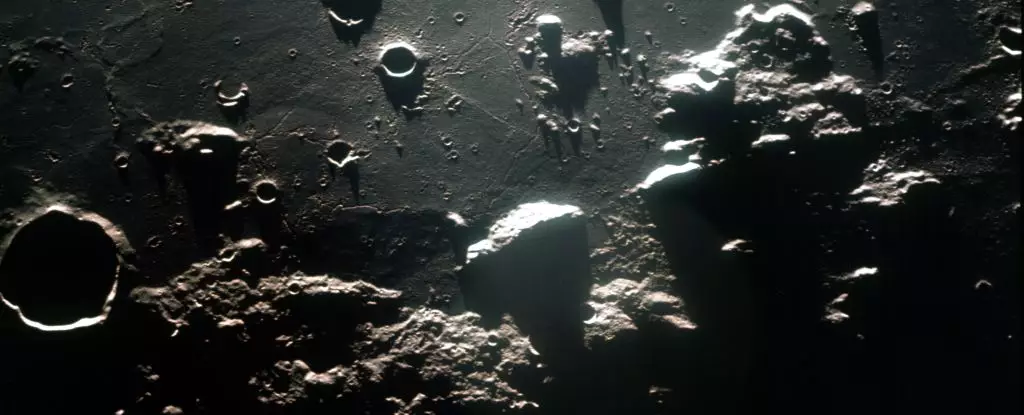The Moon has long been perceived as a dry, barren satellite, devoid of moisture and lifeless. However, recent findings have radically shifted this perspective, revealing water’s presence across various lunar terrains, igniting both scientific intrigue and exploration potential. This article explores the implications of these discoveries, delving into the Moon’s geological narrative and the promising future of human exploration.
Rethinking the Moon’s Dry Image
For centuries, humanity viewed the Moon as a desolate body hanging silently in the night sky, lacking significant water sources. Various studies had suggested the existence of water primarily in the polar regions, particularly in permanently shadowed craters where ice could accumulate. However, groundbreaking analyses, particularly those led by Roger Clark from the Planetary Science Institute, highlight the widespread distribution of water and hydroxyl—an oxygen and hydrogen compound—across all latitudes. This nuanced understanding reveals that the Moon’s hydration is not limited to extremes, shattering previously held notions and providing new avenues for research and exploration.
The realization that water exists closer to the Moon’s equator opens new frontiers in our approach to exploring this celestial body. As Clark notes, future astronauts might find practical water supplies in more accessible regions, rather than relying solely on the frigid polar areas. This discovery not only aids in comprehending the Moon’s geological history but also has tangible implications for sustained human presence on the Moon. Water is essential for life, supporting hydration, cultivation, and even as a component for fuel in potential lunar bases. The challenge now lies in leveraging this newfound knowledge effectively in planning future crewed missions.
Evidence Backed by Comprehensive Research
The investigative work is deeply rooted in advanced research methodologies, utilizing data from the Moon Mineralogy Mapper (M3), a sophisticated instrument onboard India’s Chandrayaan-1 spacecraft. The M3 collected critical spectroscopic images that highlighted how reflected infrared light relates to water and hydroxyl molecules. Through meticulous analysis, researchers have confirmed the existence of these hydrative compounds across various terrains, albeit with lower concentrations in the Moon’s basaltic plains, known as lunar mares. This intricate mapping showcases the diverse geological landscape of the Moon and its evolution over millions of years.
The Moon is not merely a static landscape but instead exhibits dynamic processes that affect the distribution of water over time. Research indicates that the water molecules present at the surface result from various geological activities. Events such as meteoric impacts unearth subsurface materials rich in water, exposing them to the harsh sunlight and subsequent solar radiation which slowly degrades these materials over eons. Simultaneously, the interaction of solar wind contributes to the formation of hydroxyl, creating a delicate balance between these elements that need further study.
Clark’s research also sheds light on longer-standing lunar enigmas, particularly the peculiar lunar swirls—distinctive, swirling patterns dotting the Moon’s surface. These features, which have puzzled scientists for years, seem to correlate with areas low in water content. The revealing connection may hint at the processes that have shaped the Moon’s surface over time, possibly indicating past geological activities like volcanism or interactions with magnetic fields. Understanding the hydration levels in these regions could elucidate the swirls’ origins and their evolutionary history.
The rediscovery of water on the Moon marks a paradigm shift in our understanding of this celestial body. As scientists unravel the intricate behavior of hydration on the lunar surface, they also pave the way for fruitful exploration. Future missions will undoubtedly capitalize on these insights, potentially transforming how humanity interacts with its nearest neighbor. Consequently, processing hydroxyl-rich minerals could provide astronauts with water, highlighting not only the Moon’s rich geological history but also its potential as a stepping stone for future interplanetary exploration. As we venture forth, the Moon is no longer merely a silent sentinel watching over Earth; it may very well become a vital hub for humanity’s next great adventure.


Leave a Reply